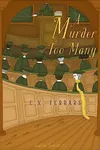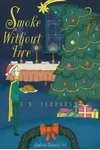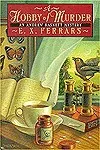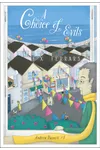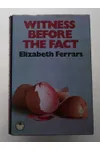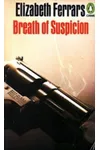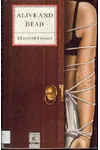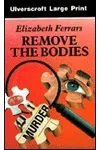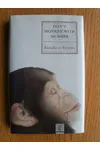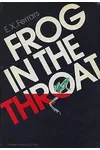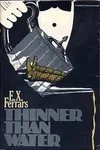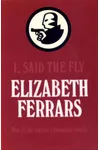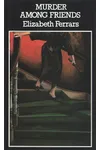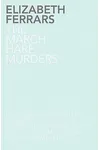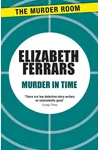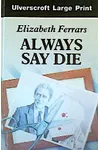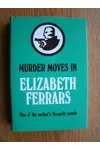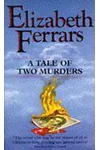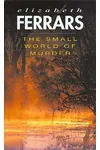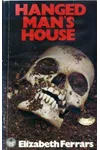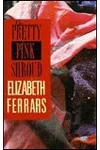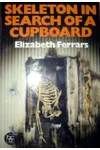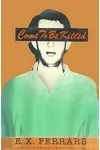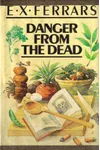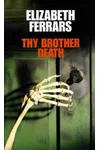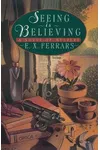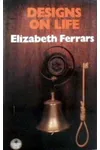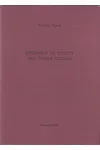Picture a British storyteller spinning intricate webs of mystery from a cozy Oxfordshire village—meet Elizabeth E.X. Ferrars! Born Morna Doris MacTaggart in 1907, Ferrars became a titan of crime fiction, crafting over 70 novels that hooked readers with clever plots and charming sleuths. Her knack for psychological depth and twisty narratives earned her a lasting spot in the cozy mystery hall of fame.
With a pen as sharp as her wit, Ferrars didn’t just write stories—she helped shape the genre itself as a founding member of the Crime Writers’ Association. Let’s dive into the life and legacy of this trailblazing author whose mysteries still captivate readers today.
The Making of Elizabeth E.X. Ferrars
Born in Rangoon, Burma (now Yangon, Myanmar), to a Scottish timber merchant and an Irish-German mother, Ferrars’s early life was a global adventure. Raised partly in Germany by her grandparents, she soaked up the rigorous structure of German grammar, which she later credited for her meticulous plotting. By age six, shifting political tides brought her to England, where she attended Bedales School and earned a journalism diploma from University College London. Her first novels, written under her birth name in the 1930s, flirted with mainstream fiction, but it was her 1940 debut crime novel, Give a Corpse a Bad Name, that launched her into the mystery world.
Married to botanist Robert Brown in 1945, Ferrars lived a life as dynamic as her plots, moving from London to Cornell University, Adelaide, and Edinburgh before settling in Blewbury, Oxfordshire. Through it all, she churned out a novel nearly every year, her typewriter a constant companion.
Elizabeth E.X. Ferrars’s Unforgettable Stories
Ferrars’s mysteries are the literary equivalent of a warm cup of tea spiked with suspense. Her debut series featured Toby Dyke, a freelance journalist with a nose for trouble, introduced in Give a Corpse a Bad Name (1940). Alongside his shady sidekick George, Toby unraveled Devon-based crimes with a mix of charm and grit across five novels. Later, Ferrars created Andrew Basnett, a retired botanist inspired by her husband, whose cozy sleuthing in books like The Crime and the Crystal (1985) blended academic wit with murder.
Her Virginia and Felix Freer series, starting with Last Will and Testament (1978), explored a semi-estranged couple navigating domestic drama and deadly secrets. Ferrars’s style leaned on psychological nuance over gore, with upper- and middle-class settings that echoed Agatha Christie’s milieu. Her plots, often described as “cosy” yet elegant, balanced brisk pacing with deep character studies, as seen in standalone gems like I, Said the Fly (1945), where a blood-drenched hatchet steals the show.
Writing as E.X. Ferrars in the U.S. (because her publishers thought the “X” added pizzazz), she wove humor and humanity into her tales, evolving from lighthearted early works to emotionally complex later novels. Her short stories, featuring sleuths like Jonas P. Jonas, further showcased her versatility.
Why Elizabeth E.X. Ferrars Matters
Ferrars didn’t just write mysteries—she helped define the genre. As a founding member of the Crime Writers’ Association in 1953 and its chairperson in 1977, she fostered a community for crime writers. Her induction into the Detection Club in 1958 cemented her status among the genre’s elite. Her novels, translated into multiple languages, captivated readers worldwide, earning her a spot in the highest Public Lending Right band for library loans.
Her legacy lives on through characters like Toby Dyke and Andrew Basnett, who embody the timeless appeal of the amateur sleuth. Ferrars’s ability to craft relatable, flawed heroes and intricate puzzles ensures her work remains a touchstone for cozy mystery fans. Her final novel, A Thief in the Night, published posthumously in 1995, was a fitting farewell from a master storyteller.
- Born: September 6, 1907, Rangoon, Burma
- Died: March 30, 1995, Blewbury, Oxfordshire
- Key Works: Give a Corpse a Bad Name, The Crime and the Crystal, Last Will and Testament
- Awards: Lifetime Achievement Award, Crime Writers’ Association (early 1980s)
Ready to crack open a classic mystery? Snag Give a Corpse a Bad Name and dive into Elizabeth E.X. Ferrars’s thrilling world of cozy crime!




